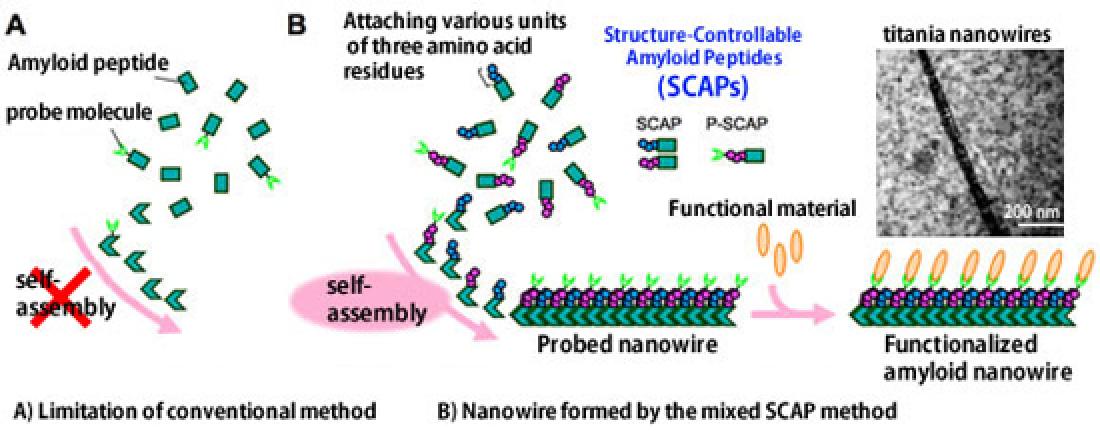Formation of functionalized nanowires by control of self-assembly of modified amyloid peptides"
Prof. Sakaguchi and his team in Graduate School of Science, Hokkaido University,jointly with MANA PI Prof. Kohei Uosaki and a research group from the University of California, Santa Barbara, have successfully developed a new technique for efficiently creating functionalized nanowires for the first time ever.
The group focused on the natural propensity of amyloid peptides, molecules which are thought to cause Alzheimer's disease, to self-assemble into nanowires in an aqueous solution and controlled this molecular property to achieve their feat.
Functionalized nanowires are extremely important in the construction of nanodevices because they hold promise for use as integrated circuits and for the generation of novel properties, such as conductivity, catalysts and optical properties which are derived from their fine structure. However, some have remarked on the technical and financial limitations of the microfabrication technology required to create these structures. Meanwhile, molecular self-organization and functionalization have attracted attention in the field of next-generation nanotechnology development. Amyloid peptides, which are thought to cause Alzheimer's disease, possess the ability to self-assemble into highly stable nanowires in an aqueous solution. Focusing on this, the research team became the first to successfully develop a new method for efficiently creating a multifunctional nanowire by controlling this molecular property.
The team designed a new peptide called SCAP, or structure-controllable amyloid peptide, terminated with a three-amino-acid-residue cap. By combining multiple SCAPs with different caps, the team found that self-organization is highly controlled at the molecular level. Using this new control method, the team formed a molecular nanowire with the largest aspect ratio ever achieved. In addition, they made modifications using various functional molecules including metals, semiconductors and biomolecules that successfully produced an extremely high quality functionalized nanowire. Going forward, this method is expected to contribute significantly to the development of new nanodevices through its application to a wide range of functional nanomaterials with self-organizing properties.



